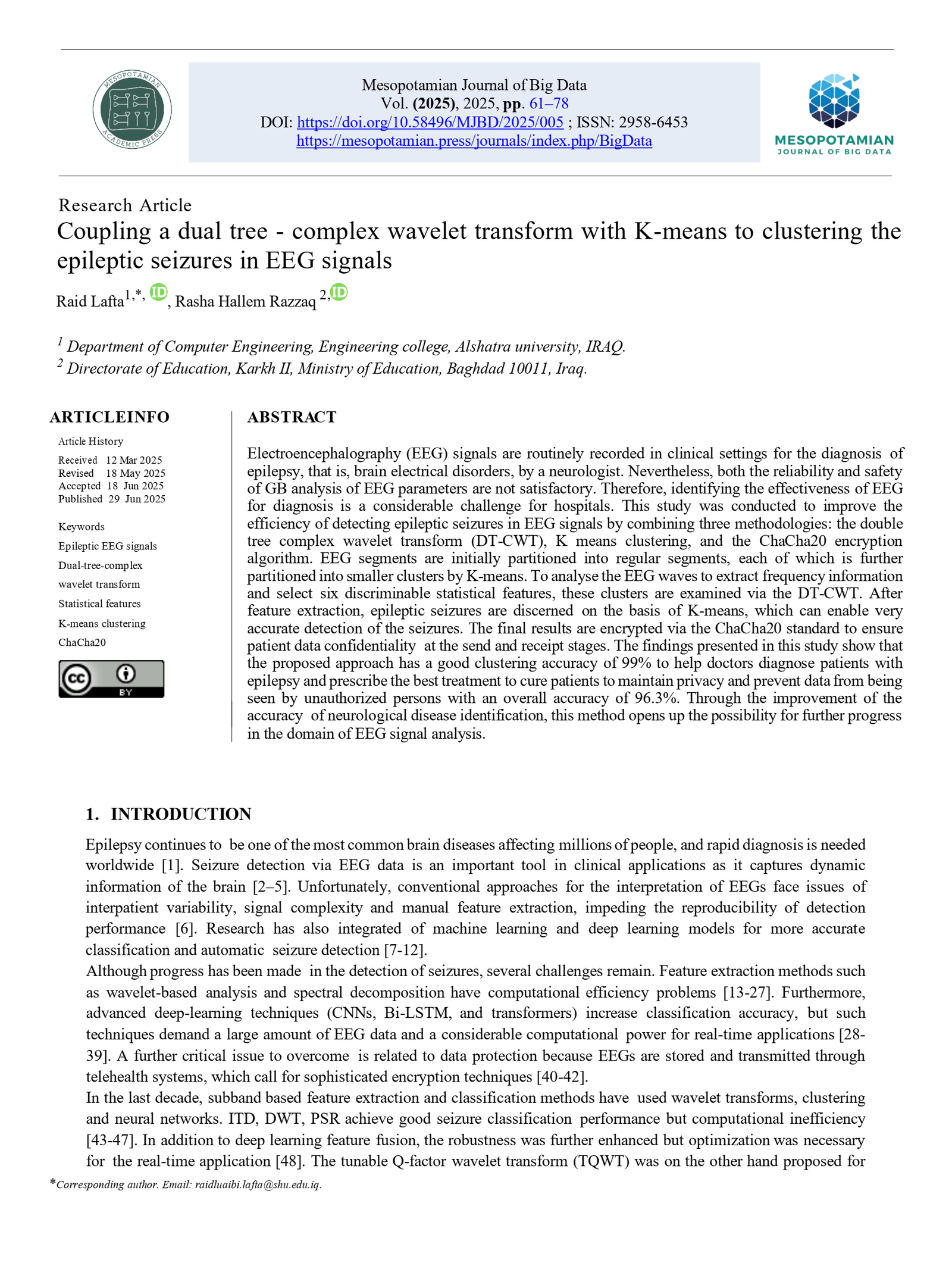Coupling a dual tree - complex wavelet transform with K-means to clustering the epileptic seizures in EEG signals
Main Article Content
Abstract
Electroencephalography (EEG) signals are routinely recorded in clinical settings for the diagnosis of epilepsy, that is, brain electrical disorders, by a neurologist. Nevertheless, both the reliability and safety of GB analysis of EEG parameters are not satisfactory. Therefore, identifying the effectiveness of EEG for diagnosis is a considerable challenge for hospitals. This study was conducted to improve the efficiency of detecting epileptic seizures in EEG signals by combining three methodologies: the double tree complex wavelet transform (DT-CWT), K means clustering, and the ChaCha20 encryption algorithm. EEG segments are initially partitioned into regular segments, each of which is further partitioned into smaller clusters by K-means. To analyse the EEG waves to extract frequency information and select six discriminable statistical features, these clusters are examined via the DT-CWT. After feature extraction, epileptic seizures are discerned on the basis of K-means, which can enable very accurate detection of the seizures. The final results are encrypted via the ChaCha20 standard to ensure patient data confidentiality at the send and receipt stages. The findings presented in this study show that the proposed approach has a good clustering accuracy of 99% to help doctors diagnose patients with epilepsy and prescribe the best treatment to cure patients to maintain privacy and prevent data from being seen by unauthorized persons with an overall accuracy of 96.3%. Through the improvement of the accuracy of neurological disease identification, this method opens up the possibility for further progress in the domain of EEG signal analysis.
Article Details
Issue
Section

This work is licensed under a Creative Commons Attribution 4.0 International License.
